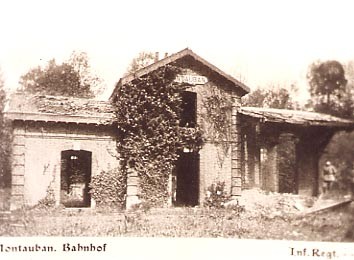Our B and B is ideally situated in the heart of the Somme Battlefield
A chapter of History
1914
on the 28th June 1914, the Archduke Franz Ferdinand of Austria was assassinated in Sarajevo, Austria-hungary.
Declarations of war followed, in an inexorable sequence : Germany, Russia, France, Great Britain, Belgium, Austria-Hungary, Serbia, etc.
Almost all the pieces were in place for the sinister game : confidently expected to end by Christmas, it was to last for more than four years.
German forces arrived in Picardy and entered Amiens on the 31st August 1914 which was abandoned 8 days later.
The first Battle of the Somme, from the 20 to the 30 September, was part of the "Race to the sea", and memorials at Ovillers, Guillement and Flers recall the battles of these early months.
From October, the frontline became stabilised stretching 750 km from Yser to the Swiss border. Strategic aims turned from containment to breakthrough, a policy which was to last for three and a half years. The somme front, held at this stage by the French army, lay along a north-south line passing close to the villages of Beaumont-Hamel, Thiepval,
La Boiselle, Fricourt, Maricourt, Curlu, Dompierre, Fay, Chaulnes and Maucourt, while the Germans occupied the ridges above the valleys of the Ancre and the Somme. Each army dug its trenches and communication lines, constructed underground shelters ans surface defences. Each set up its networks of barbed wire, often 40 meters thick, along the edges of No Man's Land, which varied between 50 meters ans 300 meters in width.
1915
proved to be the most murderous year of the whole war. It was the year of the great offensives, all designed to achieve a "breakthrough" - but all failed :
Champagne, Artois, Argonne and in the Voges.
In Turkey, the Dardanelles operations were a failure, and there was failure too at Ypres.
There was no major offensive in the Somme sector, only hit and run attacks, raids and mine warfare (Fricourt, Fay)
1916
The Battle of the Somme affected a very large part of the department, from Beaumont-Hamel and Bapaume in the
north of Chilly, south of Chaulnes. The British held the battle front line from its northen end as far as Maricourt while the French held the south across the valley of the River somme. The
general strategy for 1916 on the French, Russian and Italian fronts was proposed during the inter-Allied conference in December 1915 at the Chantilly headquaters, where Joffre clearly defined the
Somme offensive. However, "the Verdun inferno" forced the Allied command to reduce the length of the front and to reverse the roles on the Somme : The British army was now of the prime
importance.
The German command, anticipating a large-scale attack in the north of the Somme, had time to consolidate its positions substantially. This immediately made up
for its numerical disadvantage, as they took skilful advantage of the local topography, constructing miles of trenches.
Both armies prepared for the attack, creating a kind of busting temporary city. New roads appeared, others were consolidated, and bridges, stations and railway lines were constructed to bring up supplies of food, fodder, munitions and equipment. New trenches were dug, jumping off lines and acces. First-aid posts and hospitals, battery positions, airfields, assembly areas, observation posts - all needed planning and construction.
British, German and French troops finally formed a concentrated mass of approximately one million men and 200 000 horses living in a constant flow of relief and reinforcements amidst the crash of explosives.
The battle began on the 24th June with an allied artillery barrage that continued without interruption by day or night, designed to demolish the networks of barded wire barring the way and to flatten the German positions. However, bad weather and the inadequate artillery bombardment meant that the surface fortifications were not completely destroyed and the underground networks survived undamaged...
1917
The chief events on the Western Front were :
- the tragic French offensive of the Chemin des Dames in April, and its ensuing distutbances
- the Third Battle of Ypres which engaged the British and Dominion forces from July to November
-the disastrous Italian retreat after Caporetto, in November
-the Battle of Cambrai, also in November, with 381 tanks engaged in the first British mass tank attack.
1918
The German army was reinfroced by the arrival of divisions transferred from the east, after their defeat of the Russian army.
This was the year of the final German offensive on the 21 March, the British retreat, and the appointment of Foch, as the sole commander of the Allied forces, the
German breakthrough and advnace towards Amiens that was halted by Australian forces at Villers-Bretonneux and the intervention of the American troops.
The Allied counter-offensive led to the Armistice being signed on the 11 November at Compiègne.







